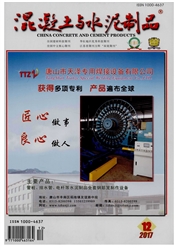

 中文摘要:
中文摘要:
对5根无黏结部分预应力混凝土梁进行了抗弯试验,分析了预应力度和非预应力筋强度等级对构件变形性能的影响。结果表明:配置HRB600部分预应力的混凝土桥梁构件开裂前刚度按照JTG D62—2004《公路钢筋混凝土及预应力混凝土桥涵设计规范》相关公式计算是合理的;预应力度的提高可以延缓试验梁开裂后挠度的发展,但对极限破坏时的挠度变化影响不大;提高钢筋等级可延缓构件开裂后刚度下降速率;提高预应力度和增加钢筋等级都会提高梁体的延性,增加其恢复变形能力。
 英文摘要:
英文摘要:
Based on flexural behavior experiment of five un-bonded partially pre-stressed concrete beams, the flexural load-carrying capacity was studied,the effect of prestress degree and strength of non-prestressed bars on the deformation performance was analyzed. The experimental results indicate that, it is reasonable that the correlation formula of JTG D62 —2004 Code for design of high way reinforced concrete and prestressed on concrete bridges and culverts is used to the stiffness calculation of unbonded partially prestressed concrete beams with HRB600 nonprestressed tendons. The developing rate of the test beams deflection after cracking is delayed with the prestress degree decreases, while the deflection little changes with their failure. The application of high-strength steel can delay the decrease rate of member stiffness after cracking. And degree of prestress and the strength of non-prestressed bars can both reduce the ductility of girder body and increase its restoration of capacity to deformation.
 同期刊论文项目
同期刊论文项目
 同项目期刊论文
同项目期刊论文
 期刊信息
期刊信息
